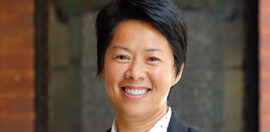The Truth About Organisational Transformation
17 December 2014 at 11:08 am
Doug Taylor, Executive Director and CEO of United Way Australia, draws on the experiences of Fairfax Media and his own organisation to reflect on the lessons to be shared between the corporate and Not for Profit sectors when it comes to organisational transformation.
I recently spoke at a business leader’s event with Greg Hywood, CEO of Fairfax, about a CEOs view of ‘organisational transformation’, facilitated by veteran ABC journalist Peter Thompson.
From the outset it was clear how similar the experiences were between Greg and I, albeit in quite different contexts, for creating change in our organisations. The thing that jumped out at me was how the notion of ‘transformation’ didn’t really reflect what we were both talking about.
Don’t get me wrong, I’m a big believer in the mandate for organisations to innovate if they are going to survive in this rapidly changing operating environment – Fairfax and United Way locally and globally are great examples. The problem is that when we use the language of ‘transformation’ we are setting up leaders and team members to fail because of the unhelpful expectations it creates and the problematic practices that are often implemented.
What do I mean by this?
I had a younger brother who grew up in the 80s and was obsessed with toys called ‘Transformers’ which could change from one machine to another with a few simple hand movements. In many ways we apply the same assumptions when thinking about organisational transformation; it’s mechanistic and technical, instant and relies on one person to make things happen.
Anyone who’s fair dinkum about their experience of leading an organisation in a period of rapid change will tell you that it’s inherently messy and organic, reliant on an exceptional team and takes time. Perhaps a better way to think about transformation is the notion of ‘adaption’. This idea has been developed in recent years by Ronald Heifetz from Harvard in an attempt to highlight what’s required to create enduring change rather than superficial, short term or ‘technical’ change. As Greg says, ‘You can see change coming. The bigger issue is about whether or not you can adapt to it.’
So let me share with you some of the insights from this conversation with Greg which I will frame as the 3 keys to leading organisational ‘adaption’ in a period of rapid change.
1. Building a collaborative capability
I cannot emphasise enough the combination of capability and collaboration in creating lasting organisational change. Both are critical. You can have the right people but if they can’t work together you are doomed. Similarly, you can have a collaborative environment but people with the wrong skill sets.
I’ve always been taken with Jim Collins metaphor in Good to Great, of ‘getting the right people on the bus, in the right seats and then working out where to go. This is tough, particularly in a community focused organisation where people invest so much into the work and at times you need to make changes to your team to recalibrate with your developing purpose.
This leads us to the other side of the coin, collaboration. When I sit in an Executive Team meeting I want people around me who know more about their subject area than me and are willing to challenge me and be challenged by others. Collaboration is being used at lot at the moment but it’s critical because, in Greg’s words, “a group makes a better decision than an individual.”
This requires a different type of leadership, one that’s focused less on proving you are the smartest person in the room but instead a leader who brings out the best in their team by helping people find their leader within. In many ways it’s contrary to the typical ‘transformation’ story of the ‘heroic individual’. You know how it goes, ‘before I arrived this place was going nowhere but look where I have led it.’ When I hear this I always wonder about the people that have probably done lots of good work before this individual arrived, not to mention people in the team who were no doubt critical to whatever success had been realised.
At United Way we take this a step further by arguing that the only way to solve critical social problems is by government, community and business collaborating and using their complementary assets and capabilities to address issues that continue to bedevil our communities. Collaborating to do this work is tough; it requires a consciousness of logo and ego and an ability to identify the three ‘Trolls of Collaboration’: competition, control and commitment, as identified by my colleagues Geoff Aigner and Liz Skelton in the ‘Australian Leadership Paradox’.
2. Creating a clarity of purpose
In order to create significant and lasting change in an organisation you need clarity of purpose, which is not the same as knowing the detailed strategy or even the ultimate destination. As Greg said when commenting about his team, “people in my place are so sick of talking about the ‘journey’ but it is not clear how we get there. It’s inspiring to see the resilience to change from staff, as it can be quite confronting.”
People find this sort of journey unsettling and often struggle with not knowing all the answers from the outset. To keep people on this path it’s critical that they buy into an agenda that ‘turns them outward’, a term coined by Rich Harwood, so they are less concerned with internal processes and politics and more focused on their community and customers.
I recently heard a Stanford Professor say that ‘80% of creating an effective strategy is understanding better the world/issue and 20% is working out what to do.’ I wonder how most leaders would stack up if we reviewed how we spend our time against this ratio? It’s from this reorientation that we start to create purpose. As Greg said, “the leadership challenge is solving the right problem… our print customers were still there but we have to be a digital first company as our business was news journalism, not print.”
Of course defining purpose is only half the challenge, the related issue is building a narrative to support this and win hearts and minds. As Greg said, “the big leadership challenge is to solve the right problem and to tell the story in the first paragraph.” It sounds simplistic to focus on purpose in a period of rapid change; surely there are other more valuable things to spend one’s time on! In a way it is simplistic, but it’s profound. You can’t build anything until you have the foundations in place.
The challenge here is to stay focused on leadership and not be consumed by management or as that old saying goes, ‘focus on doing the right thing and less on doing things right.’
3. Making decisions in the middle of the mess
Adaptive change often lands you in the middle of mess and conflict – a place where there are often no clear answers. Finding your way through this can feel like you are in the middle of a maze, with the only way through a combination of trial and error, and no doubt a dose of creativity and intuition.
When I started out as a CEO I thought that every other CEO knew exactly what they were doing, supported by access to some sacred knowledge or even a book in the bottom drawer of their desk that had all the answers. But over time as I’ve come to know some of the brightest and best CEOs the world has to offer, I’ve realised they pretty much make it up as they go and are constantly working it out, often in a way that’s not necessary linear.
The key to leadership in this environment is to hold people together through this mess. It’s tempting in the middle of the mess of rapid change to undergo extensive analysis on the assumption that more information holds the key. In many ways extensive analysis leads to a paralysis of sorts that means decisions are avoided.
A constant refrain for me in this work is to ‘not let the perfect be the enemy of the good’ and I was encouraged to hear Greg challenge others to ‘stand back and look at the reality of business and not the conventional wisdom, then you will come up with the decisions, one at a time.’ This sounds less and less like ‘transformation’ in the conventional sense, but it reflects the features of any positive and lasting change I’ve seen in organisations and communities.
About the author:
As CEO of United Way Australia Doug Taylor is focused on creating and developing its Community Impact strategy, which addresses the education, income and health needs of local communities. He’s currently a member of the United Way Worldwide membership accountability committee and is responsible for the organisation’s Asia Pacific corporate development strategy. He is active in the broader community sector through Emerging Leaders for Social Change and has sat on the Commonwealth’s Volunteer Policy Advisory Groups.







